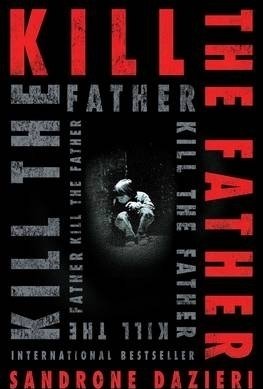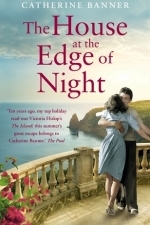Search
Search results
Rachel King (13 KP) rated JESUS, Career Counselor: How to Find (and Keep) Your Perfect Work in Books
Feb 11, 2019
This book sat on my desk for the longest time, half-read. I am a SAHM, stay-at-home mom, and I found this book had very little to do with my "career." Jones did eventually address this in the book, but only briefly, and it makes me wonder what the author's personal views are on women who choose my career. A perfect example of this is that at the end of every element section, she lists careers she considers appropriate for those that match that element, and none of the four lists mention a SAHM. Even when she discusses those who have been forced to leave their job or choose to leave their job, she views being stuck at home as a temporary place and describes how to move out of it, never considering that maybe Jesus wants it to be permanent.
Delving into the opening of the book, it is quickly apparent that the author assumes that the reader has read the author's previous books and will use these other books to produce a mission statement, personality profile, "four greatest talents", and a vision statement. As I have not read her previous works, and don't intend to, I felt I was at a further disadvantage from benefiting from reading this book.
Another mark against the book is that Jones does not stick with only one version of the Bible to quote from, and the only time she actually states which version she is quoting from is when she quotes the KJV - every other time is a mystery.
There are many positive points to the book, such as the organization. Each of the four elements are covered in-depth, with each of the four sections containing three chapters that each focus on a single word that fits that element, all beginning with the prefix "re-". Each of these words come with a detailed definition, and each chapter provides places for the reader to take notes and answer the author's questions, such as the "Make It Yours" sections and the "Career Exercises", with each chapter ending with a prayer. The "Bonus Features" at the end of each of the four sections list additional prayers, the aforementioned list of recommended occupations, and "Summary Points" of the three words defined in each section. The last section of the book has additional "Bonus Features," which is the authors' Book Picks, a list of Internet resources, a section on resumes, and a section titled "How to Deal with Sudden Job Loss / Reversal of Fortune." I do enjoy a well-organized book.
The anecdotes were entertaining and the advice seemed good and useful to those in the job market. I did appreciate Jones' goal of making Jesus central to a person's career, even if the methods by which she approaches this seemed more New Age than Biblical, despite the scripture quotes. Her writing was also very sensitive to the reader who has lost a job or is unhappy in his or her current job, which would be an appropriate way to address the reader in the current economy.
Delving into the opening of the book, it is quickly apparent that the author assumes that the reader has read the author's previous books and will use these other books to produce a mission statement, personality profile, "four greatest talents", and a vision statement. As I have not read her previous works, and don't intend to, I felt I was at a further disadvantage from benefiting from reading this book.
Another mark against the book is that Jones does not stick with only one version of the Bible to quote from, and the only time she actually states which version she is quoting from is when she quotes the KJV - every other time is a mystery.
There are many positive points to the book, such as the organization. Each of the four elements are covered in-depth, with each of the four sections containing three chapters that each focus on a single word that fits that element, all beginning with the prefix "re-". Each of these words come with a detailed definition, and each chapter provides places for the reader to take notes and answer the author's questions, such as the "Make It Yours" sections and the "Career Exercises", with each chapter ending with a prayer. The "Bonus Features" at the end of each of the four sections list additional prayers, the aforementioned list of recommended occupations, and "Summary Points" of the three words defined in each section. The last section of the book has additional "Bonus Features," which is the authors' Book Picks, a list of Internet resources, a section on resumes, and a section titled "How to Deal with Sudden Job Loss / Reversal of Fortune." I do enjoy a well-organized book.
The anecdotes were entertaining and the advice seemed good and useful to those in the job market. I did appreciate Jones' goal of making Jesus central to a person's career, even if the methods by which she approaches this seemed more New Age than Biblical, despite the scripture quotes. Her writing was also very sensitive to the reader who has lost a job or is unhappy in his or her current job, which would be an appropriate way to address the reader in the current economy.

My Daily Book of Mormon Devotional
Book and Lifestyle
App
This book helps you answer two questions, “How do I make my scripture study more effective?” and...
WHEN golden banded honeybees, so often likened to summer and honey sweetness, become the metaphor of a dystopian version of British Government and the Monarchy, what is one left to think?
Established British playwright Laline Paull’s debut novel, The Bees, represents just that. I may just be reading too much into the buzz, but the Oxford alumni who has had two plays performed at the Royal National Theatre must have some of the country in her subconscious as she writes.
The novel follows the life of worker honeybee Flora 717, born of the lowest class of bee society. In a world where mutation and difference is destroyed on sight, the larger-than-average Flora is saved from destruction by opportunities born from austerity in the hive, where ‘the season is deformed by rain, and the flowers shun’ the bees, so they need every available worker.
The life of the honeybee turns out to be symmetrical of Plato’s Republic and his utopia, where children are told what role they will have in life based on their ‘blood’. Plato divided the bronze craftsman, silver guardians and golden philosophers, and Paull divides bees in their ‘kin’ groups, named after flowers, and are priestesses to police, foragers who can fly outside the hive to the sanitation Flora, the lowest, and are given ‘no flower’. ‘A Flora may not make Wax for she is unclean, nor Propolis for she is clumsy, nor ever may she forage for she has no taste, but only may she serve her hive by cleaning,’ but the talented Flora 717 wants more.
Throughout the novel, Paull shows the same attachment to characters as George R R Martin, author of the Game of Thrones novels; the frequent loss deepens the heartbreak Flora must overcome as she fights to defy her set fate and claim the most illegal of desires. No reader will escape the anguish that concludes each new adventure.
The hive is akin to a cult, with leaders keeping their inferiors in check, with fear, intoxication and just a little hypnosis. The cult is complete with its own religion, mantra and even a parody of the Lord’s Prayer, ‘Hallowed be thy womb’, arguably my favourite part. This made the story really exciting, being on the ‘outside looking in’ as the reader, I wanted to encourage Flora to defy, but felt the fear of going against her sisters (this isn’t a cult bond word, they are all blood sisters, for only ‘the queen may breed’).
Paull’s scriptwriting has nurtured the ability to make the reader visualise her words exactly how she writes them, and that is clear within The Bees. I can see the wax panels that Flora 717 scuttles across as she travels around her hive, I can imagine the wax cribs in the nursery and know the deadly yellow and fine lines of the enemy wasp. In the ‘glass cage’ when Flora discovers the Venus Fly Trap, Paull never mentions the plant by name, but speaks only of their ‘red mouths’ with ‘white filaments’ on each ‘inner lip’, they ‘bore no pollen, the only nectar a viscous slick at the join of the petals’. But for all her beautiful imagery seeping off the pages, The Bees was not a book I have felt submerged in.
Full review on <a href="http://www.natari-himi.com">natari-himi.com</a>;
Established British playwright Laline Paull’s debut novel, The Bees, represents just that. I may just be reading too much into the buzz, but the Oxford alumni who has had two plays performed at the Royal National Theatre must have some of the country in her subconscious as she writes.
The novel follows the life of worker honeybee Flora 717, born of the lowest class of bee society. In a world where mutation and difference is destroyed on sight, the larger-than-average Flora is saved from destruction by opportunities born from austerity in the hive, where ‘the season is deformed by rain, and the flowers shun’ the bees, so they need every available worker.
The life of the honeybee turns out to be symmetrical of Plato’s Republic and his utopia, where children are told what role they will have in life based on their ‘blood’. Plato divided the bronze craftsman, silver guardians and golden philosophers, and Paull divides bees in their ‘kin’ groups, named after flowers, and are priestesses to police, foragers who can fly outside the hive to the sanitation Flora, the lowest, and are given ‘no flower’. ‘A Flora may not make Wax for she is unclean, nor Propolis for she is clumsy, nor ever may she forage for she has no taste, but only may she serve her hive by cleaning,’ but the talented Flora 717 wants more.
Throughout the novel, Paull shows the same attachment to characters as George R R Martin, author of the Game of Thrones novels; the frequent loss deepens the heartbreak Flora must overcome as she fights to defy her set fate and claim the most illegal of desires. No reader will escape the anguish that concludes each new adventure.
The hive is akin to a cult, with leaders keeping their inferiors in check, with fear, intoxication and just a little hypnosis. The cult is complete with its own religion, mantra and even a parody of the Lord’s Prayer, ‘Hallowed be thy womb’, arguably my favourite part. This made the story really exciting, being on the ‘outside looking in’ as the reader, I wanted to encourage Flora to defy, but felt the fear of going against her sisters (this isn’t a cult bond word, they are all blood sisters, for only ‘the queen may breed’).
Paull’s scriptwriting has nurtured the ability to make the reader visualise her words exactly how she writes them, and that is clear within The Bees. I can see the wax panels that Flora 717 scuttles across as she travels around her hive, I can imagine the wax cribs in the nursery and know the deadly yellow and fine lines of the enemy wasp. In the ‘glass cage’ when Flora discovers the Venus Fly Trap, Paull never mentions the plant by name, but speaks only of their ‘red mouths’ with ‘white filaments’ on each ‘inner lip’, they ‘bore no pollen, the only nectar a viscous slick at the join of the petals’. But for all her beautiful imagery seeping off the pages, The Bees was not a book I have felt submerged in.
Full review on <a href="http://www.natari-himi.com">natari-himi.com</a>;
Lee (2222 KP) rated Weathering with You (2019) in Movies
Jan 31, 2020
Weathering With You is another beautifully creative romantic fantasy from director Makoto Shinkai, who was responsible for 2016 hit, Your Name. I only recently watched Your Name, and to say that it blew me away would be an understatement - it's a movie I still think about to this day. So, I headed into Weathering With You, perhaps a little unfairly, with some pretty high expectations. Consequently, I came away a little disappointed. But that's not to say that this isn't a great movie.
As with Your Name, one of the core themes behind Weathering With You is the pursuit of true love and it begins by introducing our teen protagonists before they've had a chance to meet. In rain-soaked Tokyo, Hina is attracted to a beam of sunlight that is cutting through the clouds across town, and she rushes off to try and get a closer look. Running up flights of stairs to a building rooftop, she comes across a simple shrine at the spot where the sunlight hits the Earth. Praying hard, she steps slowly through the shrine gate and the rain stops. We then see Hina falling through the sky, observing beautiful, magical weather all around her.
Hodaka is a 16 year old runaway, traveling by ferry boat to Tokyo. While standing out on deck during a powerful storm, flooding almost sends him overboard, but he is rescued by Mr Suga, a magazine publisher who ends up giving him his business card. After arriving in Tokyo and struggling to find work, Hodaka eventually calls upon Mr Suga, who gives him a job. The heavy rain that almost cost Hodaka his life has been persisting for some time now, despite being the middle of summer, and long range forecasts are predicting no real change for the foreseeable future. Storms are also leaving behind fish-like objects and a strange jelly substance, which is leaving experts baffled.
Hodaka first encounters Hina in the McDonalds where she is working, then later on Hodaka rescues Hina from what he believes to be a dangerous situation and the pair find themselves becoming friends. Through his reporting work at the magazine run by Mr Suga, Hodaka had been investigating the mythical "Weather Maidens", and he discovers that Hina is one of them, with the ability to bring about sunshine through prayer. With Hina and Hodaka both in desperate need of money, they go into business together, taking requests online from people wanting rain-free occasions, such as family picnics or weddings and earning Hina the name "Sunshine Girl". The power of a weather maiden comes at a cost though, as they eventually become a human sacrifice to the skies, with each use of their power bringing that moment one step closer.
The larger premise of Weathering With You is obviously climate change - how messing with nature always comes at a cost and how children have real power to influence change. Visually, the movie is simply stunning, and animated rainfall has never looked so beautiful. It's also peppered with a rather distracting and cheesy J-Pop score, made all the worse if you try and follow the on-screen lyrics, which obviously do not have the same impact when translated literally. Sadly, there are far too many plot threads presented throughout without any clarity or resolution and overall the whole thing just felt too long. Admittedly, it was a pretty high bar set by Your Name, but unfortunately Weathering With You doesn't have the emotional weight to meet that, with a narrative that isn't as complex or as engaging.
As with Your Name, one of the core themes behind Weathering With You is the pursuit of true love and it begins by introducing our teen protagonists before they've had a chance to meet. In rain-soaked Tokyo, Hina is attracted to a beam of sunlight that is cutting through the clouds across town, and she rushes off to try and get a closer look. Running up flights of stairs to a building rooftop, she comes across a simple shrine at the spot where the sunlight hits the Earth. Praying hard, she steps slowly through the shrine gate and the rain stops. We then see Hina falling through the sky, observing beautiful, magical weather all around her.
Hodaka is a 16 year old runaway, traveling by ferry boat to Tokyo. While standing out on deck during a powerful storm, flooding almost sends him overboard, but he is rescued by Mr Suga, a magazine publisher who ends up giving him his business card. After arriving in Tokyo and struggling to find work, Hodaka eventually calls upon Mr Suga, who gives him a job. The heavy rain that almost cost Hodaka his life has been persisting for some time now, despite being the middle of summer, and long range forecasts are predicting no real change for the foreseeable future. Storms are also leaving behind fish-like objects and a strange jelly substance, which is leaving experts baffled.
Hodaka first encounters Hina in the McDonalds where she is working, then later on Hodaka rescues Hina from what he believes to be a dangerous situation and the pair find themselves becoming friends. Through his reporting work at the magazine run by Mr Suga, Hodaka had been investigating the mythical "Weather Maidens", and he discovers that Hina is one of them, with the ability to bring about sunshine through prayer. With Hina and Hodaka both in desperate need of money, they go into business together, taking requests online from people wanting rain-free occasions, such as family picnics or weddings and earning Hina the name "Sunshine Girl". The power of a weather maiden comes at a cost though, as they eventually become a human sacrifice to the skies, with each use of their power bringing that moment one step closer.
The larger premise of Weathering With You is obviously climate change - how messing with nature always comes at a cost and how children have real power to influence change. Visually, the movie is simply stunning, and animated rainfall has never looked so beautiful. It's also peppered with a rather distracting and cheesy J-Pop score, made all the worse if you try and follow the on-screen lyrics, which obviously do not have the same impact when translated literally. Sadly, there are far too many plot threads presented throughout without any clarity or resolution and overall the whole thing just felt too long. Admittedly, it was a pretty high bar set by Your Name, but unfortunately Weathering With You doesn't have the emotional weight to meet that, with a narrative that isn't as complex or as engaging.

Kill the Father
Book
'The rock cast a sharp, dark shadow over a shape huddled on the ground. Please don't let it be the...

BankDhofar
Business and Finance
App
Banking allows customers with BankDhofar ATM card to access their accounts from cell phone or...
BankofMarquis (1832 KP) rated Lilies of the Field (1963) in Movies
Jan 31, 2022
Strong Performances by Poitier and Skala
The film that Sidney Poitier won his Best Actor In A Leading Role Oscar for (becoming the first Black Man to do so) is the type of film that is rarely made these days - a simple film of love, faith, friendship and inspiration.
Written by James Poe from the Novel by William E. Barrett, LILIES OF THE FIELD tells the tale of a drifter who is the answer to a Nun’s prayer. Praying to the God that she believes in, she asks for help in getting a Church built in the desert in Arizona.
Simply Directed by Ralph Nelson (fresh off his success with REQUIEM FOR A HEAVYWEIGHT), Lilies of the Field is a positive life (and faith) affirming film from start to finish that will touch your heart…and your soul.
Poitier stars as handyman Homer Smith who’s car breaks down where a group of Nuns are trying to start a parish (and get a church built). Following the machinations of Mother Maria (Lilia Skala - in an Oscar nominated turn of her own), Homer never leaves and ends up being inspired - and inspiring others - to get this church built.
But it is the journey - not the destination - of this film that matters. Homer is thwarted time and time again by Mother Maria in his attempts to leave and his protestations that this is the “final job, then I’m leaving” is met with steeled determination by Mother Maria who has an unflappable belief that Homer is the answer to her prayers.
This film hangs on the relationship between Homer and Mother Maria and these 2 fine actors deliver the goods. Poitier is a deserved winner of the Best Actor Oscar (though he would fret for years that his win was a “token” win - which it is not). His Homer Smith is charming and forceful with a “lost” look in his eyes when he first arrives in the desert. This, in turns, changes to fierce determination to get that church built.
The real hero of this film is the under-rated performance of Skala (who did a series of TV Guest star appearances in the 50’s, 60’s and 70’s but never really had a movie role - before or since - that would rival this one). It would have been tempting to make Mother Maria a one-note ice queen in her dogged determination - and belief - that Homer was sent by God, but in the hands of Skala there is a warmth in her eyes that serves as a counterbalance to her resolve.
It is the relationship of these 2 characters - and the ramifications of this relationship to the parish community - that is the soul of this film, and this soul runs deep. The relationship between Homer and Mother Maria is not, exactly, a friendship, but more of a strong work bond. 2 persons united in a common goal - for the common good.
Not the fastest moving of all films you will view, but the heart and soul that is at the center of this film - along with 2 very strong central performances - will warm your heart.
Letter Grade: A-
8 stars (out of 10) and you can take that to the Bank(ofMarquis)
Written by James Poe from the Novel by William E. Barrett, LILIES OF THE FIELD tells the tale of a drifter who is the answer to a Nun’s prayer. Praying to the God that she believes in, she asks for help in getting a Church built in the desert in Arizona.
Simply Directed by Ralph Nelson (fresh off his success with REQUIEM FOR A HEAVYWEIGHT), Lilies of the Field is a positive life (and faith) affirming film from start to finish that will touch your heart…and your soul.
Poitier stars as handyman Homer Smith who’s car breaks down where a group of Nuns are trying to start a parish (and get a church built). Following the machinations of Mother Maria (Lilia Skala - in an Oscar nominated turn of her own), Homer never leaves and ends up being inspired - and inspiring others - to get this church built.
But it is the journey - not the destination - of this film that matters. Homer is thwarted time and time again by Mother Maria in his attempts to leave and his protestations that this is the “final job, then I’m leaving” is met with steeled determination by Mother Maria who has an unflappable belief that Homer is the answer to her prayers.
This film hangs on the relationship between Homer and Mother Maria and these 2 fine actors deliver the goods. Poitier is a deserved winner of the Best Actor Oscar (though he would fret for years that his win was a “token” win - which it is not). His Homer Smith is charming and forceful with a “lost” look in his eyes when he first arrives in the desert. This, in turns, changes to fierce determination to get that church built.
The real hero of this film is the under-rated performance of Skala (who did a series of TV Guest star appearances in the 50’s, 60’s and 70’s but never really had a movie role - before or since - that would rival this one). It would have been tempting to make Mother Maria a one-note ice queen in her dogged determination - and belief - that Homer was sent by God, but in the hands of Skala there is a warmth in her eyes that serves as a counterbalance to her resolve.
It is the relationship of these 2 characters - and the ramifications of this relationship to the parish community - that is the soul of this film, and this soul runs deep. The relationship between Homer and Mother Maria is not, exactly, a friendship, but more of a strong work bond. 2 persons united in a common goal - for the common good.
Not the fastest moving of all films you will view, but the heart and soul that is at the center of this film - along with 2 very strong central performances - will warm your heart.
Letter Grade: A-
8 stars (out of 10) and you can take that to the Bank(ofMarquis)
Hazel (1853 KP) rated The House at the Edge of the Night in Books
Oct 20, 2017
For Victoria Hislop fans
I received this book for free through Goodreads First Reads.
Castellamare, a small island off the south coast of Italy, is the perfect setting for a captivating epic tale that traces a family from the beginning of the 1900s until the more recent year of 2009. Centred at the island’s only bar ‘The House at the Edge of the Night’, the island inhabitants suffer through two world wars, fascism, tourism and recession, however, the bar determinedly stays standing. But what happens in the rest of the world is largely ignored by the island dwellers that prefer to come to the bar to learn about friendships, betrayals and love affairs.
The House at the Edge of the Night begins on the mainland where the Dr Esposito removes the foundling Amadeo from care. Following in his foster father’s footsteps, Amadea Esposito trains to be a doctor and eventually lands himself a position on Castellamare. Having never had a doctor on the island before, Amadeo is welcomed by almost everyone, however, an illicit affair puts an end to his career. Fortunately, The House at the End of the Night provides Amadeo with an income and a home for his new wife, Pina, and his four children.
The story takes the reader through the Second World War, something that is interesting to read from the Italian’s point of view. Rejecting fascism, the Islanders are enraged when their boys are called up to join the war, especially as many, including Amadeo’s three boys, never return. With only a daughter, Maria-Grazia, remaining, the Esposito’s keep the bar going for lack of anything better to do.
But war brings good things as well as bad. Washed up on sure, the British soldier Robert brings good luck to the superstitious villagers, eventually marrying the lovely Maria-Grazia. The story continues through the childhood of their unruly boys, coming to an end as their granddaughter reaches adulthood.
A doctor and a barman, Amadeo also had a love for stories. Listening to his patients and patrons fantastical tales, Amadeo keeps note of them all in his personal notebook. Split into five parts, the book contains a story at the beginning of each section that, although mythical, set the scene for the subsequent narrative.
Alienated from the rest of the world, the Islanders are stuck in their ways, attributing any luck – good and bad – to their patron saint, Sant’Agata. Whenever life gets tough, the people on Castellamare turn to prayer, which although is part of their Catholic faith, often comes across as superstitious and irrational. They refuse to believe any logical explanation, preferring to regard their island as a magical, preternatural site.
There is no specific storyline with the usual climax and conclusion; instead, it works as a biography of a fictional family. It is interesting to regard the impact of the rapidly developing world on the island, from the introduction of a building society and the eventual launch of the Europe – something that the Islanders are naturally against. The inhabitants of Castellamare come across as naïve, but their backgrounds and beliefs are far more interesting than the average person.
The House at the Edge of the Night is a story of stories. It provides more than to be expected from a novel. Catherine Banner writes of beautiful settings, compelling characters and fascinating events that both amuse and entertain in a moving way.
With Victoria Hislop’s novels such as The Island being all the rage amongst many female readers, Catherine Banner’s The House at the Edge of the Night is destined for success. It is a great book to read on holiday or at home, and perfect for book clubs. This book is the ideal escape from the stresses of everyday life.
Castellamare, a small island off the south coast of Italy, is the perfect setting for a captivating epic tale that traces a family from the beginning of the 1900s until the more recent year of 2009. Centred at the island’s only bar ‘The House at the Edge of the Night’, the island inhabitants suffer through two world wars, fascism, tourism and recession, however, the bar determinedly stays standing. But what happens in the rest of the world is largely ignored by the island dwellers that prefer to come to the bar to learn about friendships, betrayals and love affairs.
The House at the Edge of the Night begins on the mainland where the Dr Esposito removes the foundling Amadeo from care. Following in his foster father’s footsteps, Amadea Esposito trains to be a doctor and eventually lands himself a position on Castellamare. Having never had a doctor on the island before, Amadeo is welcomed by almost everyone, however, an illicit affair puts an end to his career. Fortunately, The House at the End of the Night provides Amadeo with an income and a home for his new wife, Pina, and his four children.
The story takes the reader through the Second World War, something that is interesting to read from the Italian’s point of view. Rejecting fascism, the Islanders are enraged when their boys are called up to join the war, especially as many, including Amadeo’s three boys, never return. With only a daughter, Maria-Grazia, remaining, the Esposito’s keep the bar going for lack of anything better to do.
But war brings good things as well as bad. Washed up on sure, the British soldier Robert brings good luck to the superstitious villagers, eventually marrying the lovely Maria-Grazia. The story continues through the childhood of their unruly boys, coming to an end as their granddaughter reaches adulthood.
A doctor and a barman, Amadeo also had a love for stories. Listening to his patients and patrons fantastical tales, Amadeo keeps note of them all in his personal notebook. Split into five parts, the book contains a story at the beginning of each section that, although mythical, set the scene for the subsequent narrative.
Alienated from the rest of the world, the Islanders are stuck in their ways, attributing any luck – good and bad – to their patron saint, Sant’Agata. Whenever life gets tough, the people on Castellamare turn to prayer, which although is part of their Catholic faith, often comes across as superstitious and irrational. They refuse to believe any logical explanation, preferring to regard their island as a magical, preternatural site.
There is no specific storyline with the usual climax and conclusion; instead, it works as a biography of a fictional family. It is interesting to regard the impact of the rapidly developing world on the island, from the introduction of a building society and the eventual launch of the Europe – something that the Islanders are naturally against. The inhabitants of Castellamare come across as naïve, but their backgrounds and beliefs are far more interesting than the average person.
The House at the Edge of the Night is a story of stories. It provides more than to be expected from a novel. Catherine Banner writes of beautiful settings, compelling characters and fascinating events that both amuse and entertain in a moving way.
With Victoria Hislop’s novels such as The Island being all the rage amongst many female readers, Catherine Banner’s The House at the Edge of the Night is destined for success. It is a great book to read on holiday or at home, and perfect for book clubs. This book is the ideal escape from the stresses of everyday life.
Haley Mathiot (9 KP) rated A Distant Melody (Wings of Glory, #1) in Books
Apr 27, 2018
Allie has never been able to please her parents, so she’ll do anything to make them happy, even if it means marrying a man she doesn’t love. But when she goes to visit her best friend for her wedding, she meets Walter Novak, flyer in the Air Force, and her heart begins to open to him. Allie and Walter write letters while he’s oversees, and Allie tries to anticipate her wedding with her promised fiancé, but as she gets to know Baxter more and more, she begins to have doubts about God’s will for her life—obey and honor her parents and marry a non-Christian in hopes of leading him to Christ, or disobey her parents and refuse to be “unevenly yoked?” And the fact that she’s falling in love with Walt isn’t helping things any.
I adored A Distant Melody. From the second I opened it, it captured my imagination and swept me away.
The plot seemed simple at first, but it kept taking little twists and turns that I didn’t expect. It was suspenseful, but not in a thriller kind of way. There were times when Walt was flying that were very exciting and thrilling, but it wasn’t enough to put it in that genre. It had just enough. The pacing itself was perfect—nothing felt rushed. I hate a rushed romance, it’s implausible. A Distant Melody is the perfect speed. I devoured it within a few hours.
I love these characters! I want more with them!!! One awesome aspect about A Distant Melody is it is not a victim of “happy-land syndrome,” or “perfect plot” syndrome. The story didn’t seem to work out just perfect with everyone happy all the time, and everyone talking about God all the time, and everyone acting like perfect Christians all the time. No, they were real people who sinned and suffered the consequences, both from other people and from their guilt and grief. There were times and parts where you say “Oh no! Now he’s going to think this!” or “Oh no she hasn’t gotten his letter yet!” and so on. However, their confessions of said sins were also such a key part of the story, and made you love them so much more.
I liked the writing a lot. Sundin has a clear concise way with words, and paints a picture without being poetic. I also loved her wit and humor, and those Sarah-Dessen-like running jokes. You have to love those running jokes that run through the whole book, that make you feel like you’re part of the character’s life.
I know I usually don’t say anything about the cover because generally I don’t care about the cover. In this case, the cover is perfect. It has every detail mentioned in the book, from the right clothing and hairstyles of the characters to the detail work on the air plane.
A very important thing about a Christian novel is it shouldn't feel like it’s preaching at you. There was prayer, Bible verses, hymns and such. But it didn’t feel cheesy and fake: partially because of the characters (as I mentioned above) and partially because although they were mentioned and discussed, they weren’t hammered. Basically, this was not Sundin’s way of publishing a theology book. It’s a novel, and it feels like one.
I think I loved everything about this book. I loved the characters, I loved the writing, I loved the plot and the pacing, I loved the jokes, I even love the cover. I can’t think of one thing that I didn’t like, or that distracted me from the story. I devoured A Distant Melody, thoroughly enjoyed every part of it, and I cannot wait for the next book.
I adored A Distant Melody. From the second I opened it, it captured my imagination and swept me away.
The plot seemed simple at first, but it kept taking little twists and turns that I didn’t expect. It was suspenseful, but not in a thriller kind of way. There were times when Walt was flying that were very exciting and thrilling, but it wasn’t enough to put it in that genre. It had just enough. The pacing itself was perfect—nothing felt rushed. I hate a rushed romance, it’s implausible. A Distant Melody is the perfect speed. I devoured it within a few hours.
I love these characters! I want more with them!!! One awesome aspect about A Distant Melody is it is not a victim of “happy-land syndrome,” or “perfect plot” syndrome. The story didn’t seem to work out just perfect with everyone happy all the time, and everyone talking about God all the time, and everyone acting like perfect Christians all the time. No, they were real people who sinned and suffered the consequences, both from other people and from their guilt and grief. There were times and parts where you say “Oh no! Now he’s going to think this!” or “Oh no she hasn’t gotten his letter yet!” and so on. However, their confessions of said sins were also such a key part of the story, and made you love them so much more.
I liked the writing a lot. Sundin has a clear concise way with words, and paints a picture without being poetic. I also loved her wit and humor, and those Sarah-Dessen-like running jokes. You have to love those running jokes that run through the whole book, that make you feel like you’re part of the character’s life.
I know I usually don’t say anything about the cover because generally I don’t care about the cover. In this case, the cover is perfect. It has every detail mentioned in the book, from the right clothing and hairstyles of the characters to the detail work on the air plane.
A very important thing about a Christian novel is it shouldn't feel like it’s preaching at you. There was prayer, Bible verses, hymns and such. But it didn’t feel cheesy and fake: partially because of the characters (as I mentioned above) and partially because although they were mentioned and discussed, they weren’t hammered. Basically, this was not Sundin’s way of publishing a theology book. It’s a novel, and it feels like one.
I think I loved everything about this book. I loved the characters, I loved the writing, I loved the plot and the pacing, I loved the jokes, I even love the cover. I can’t think of one thing that I didn’t like, or that distracted me from the story. I devoured A Distant Melody, thoroughly enjoyed every part of it, and I cannot wait for the next book.






